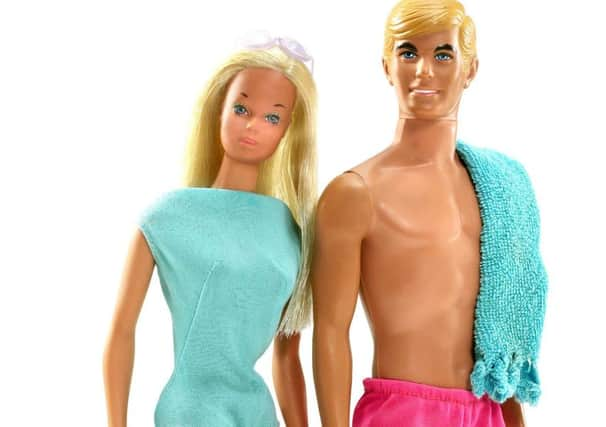Hannah McGill: Beauty of dolls is kids don't care


Periodically, the tabloid press offers the oxygen of publicity to someone hellbent on enduring multiple cosmetic procedures in the hope of resembling a real-life Barbie. Now the doll’s manufacturer, Mattel, has responded to the climate of the times (and gained some nice plump free publicity) by relaunching Barbie in a variety of body shapes. Barbie is still slim and pretty, of course – but now you can get a shorter one with a bit of curve to her hips and a couple of different skin tones.
Actual children have, of course, made drastic alterations to Barbie’s appearance and image for as long as they’ve been playing with her. The philosopher Walter Benjamin wrote, in 1928, “we must not forget that the most enduring modifications in toys are never the work of adults, whether they be manufacturers, educators or writers, but the result of children at play” – which rather suggests that he too liked to chop his dolls’ hair off, pierce their ears with pins and subject them to experimental make-up looks. For my sister and me, and indeed for every friend I’ve ever spoken to about it, dolls weren’t so much idealised or aspirational figures as actors we employed to play unflattering and demanding multiple roles. (Indeed, we much preferred Barbie’s British imitator Sindy, because her modest figure and neutral expression made her a more adaptable performer than the madly grinning and unavoidably va-va-voom Barbie.)
Advertisement
Hide AdAdvertisement
Hide AdDolls don’t have to be regarded as representing idealised people any more than the diagrams on the doors of public toilets or the green and red figures that light up to help us cross roads do. They’re just schematic, functional representations of the human form. Non-specificity is the whole point; the child’s imagination does the rest. I don’t think it ever occurred to me that my body might or should turn out to look like Barbie’s. How could it? She had feet that were smaller than her hands and permanently fixed into high-heel position! Who would want that?
That said, this is arguably a more punishing world in terms of the relentless criticism, comparison and alteration of woman’s bodies than the one I grew up in; and any gesture that widens boundaries of acceptability helps to break a certain monotonous message of utter conformity.
A company that does this, however, makes a rod for its own back. Already, questions have been asked about when Barbie’s beloved, Ken, will be similarly adjusted for real life. And while I’m not certain we should assume that children are learning indelible lessons about beauty standards from dolls, why does “curviness” always seem to be the acceptable standard to alter? Insofar as Barbie can help girls to accept what society might tell them to hate about themselves, Acne Barbie and Normal Amount of Body Hair Barbie might be even more revolutionary than Slightly Bigger Bum Barbie.
Respite from tyranny of 24/7
TESCO reducing the number of stores it keeps open all night has been described as the latest casualty of the supermarket wars, with the big behemoths needing more sleep in order to better compete with the ones that sell all the random camping equipment and exotic gherkins.
But is it really a loss? Haven’t 24-hour supermarkets always been creepy – redolent of great loneliness, or the aftermath of a zombie attack? Those scenarios aside, the only thing anyone needs suddenly at 4am is alcohol, which sensible licensing laws deny us anyway; or hot food, at which supermarkets tend to be rubbish. Presumably, the rationale for the UK embracing 24-hour opening was that if there had to be staff around at all – cleaning, or restocking shelves – then the possibility of scraping back their wages by trading at the same time could not be squandered. No doubt the possibility of doing the weekly shop at an ungodly hour is handy to some night shift workers, insomniacs and nocturnal Jaffa cake cravers.
Mostly, though, with its bleary staff and eternally humming fluorescent lights, the never-closing supermarket is a big sad emblem of the prioritisation of profit over natural human rhythms. We all need a rest sometimes. Let there be some hours of the day when we’re not called upon to consume.
I need to talk about Kevin
IT’S not worth getting too annoyed by American actors doing shaky Scottish accents. After all, it hardly matters to the wider world if on-screen Scots regularly get lost in that weird twilight place of elfin flutey vowels and random glottal stops. But when an eminent actor makes an advert the point of which is his extraordinary versatility, and therein gives a “Scottish” character an accent so completely Irish that even he eventually acknowledges it… well, what’s going on there, Kevin Spacey? Utter ignorance and carelessness on the part of everyone on set? Or – today’s most cynical default explanation for anything – wilful muck-up in exchange for social media attention?